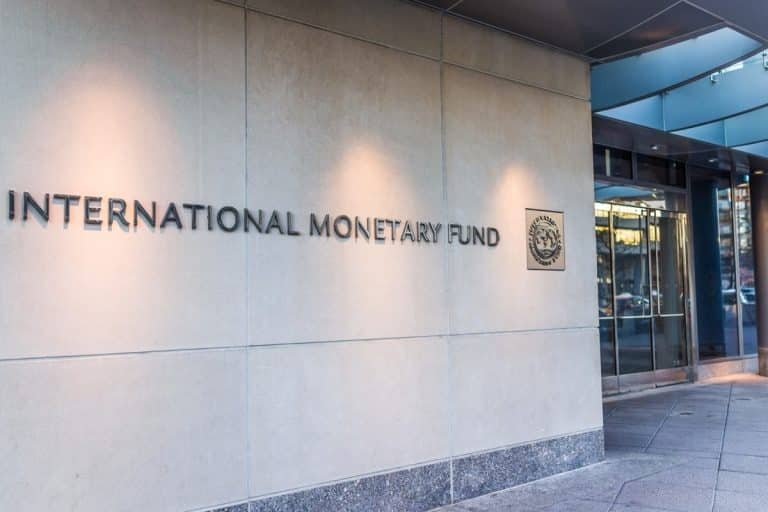The International Monetary Fund (IMF) has delivered a striking update to its outlook for the United Arab Emirates: growth in 2025 is now projected at 4.8 %, a noticeable upward revision from earlier forecasts. This signals confidence in the UAE’s economic resilience, momentum in its diversification strategy, and capacity to navigate global uncertainties.
Behind this upgrade lie myriad forces—from a rebound in hydrocarbon output to sustained vigor in non-oil sectors, plus strong fiscal buffers and investor confidence. In this article, we unpack what this upgraded outlook means for the UAE, its people, and its long‑term trajectory.
Why the Upgrade Matters
1. A Bold Signal to Markets and Investors
An upward revision from a major institution like the IMF isn’t mere numbers—it’s a signal. It boosts confidence among foreign investors, financial markets, and domestic stakeholders. A forecast of 4.8 % growth suggests the UAE is not only holding its ground but accelerating.

2. Outpacing Regional and Global Trends
Global growth is expected to remain moderate, and many emerging markets face headwinds. The UAE’s forecasted 4.8 % positions it well above many peers, highlighting its potential as a safe harbour in turbulent times.
3. Reinforcing the Diversification Narrative
Oil is no longer the sole pillar of the UAE’s economy. The IMF’s revision reflects the strength of non-oil sectors—tourism, logistics, real estate, finance, and more—playing an increasingly dominant role. This is a vindication of decades-long policy shifts toward economic diversity.

Drivers of the 4.8 % Outlook
Hydrocarbon Rebound with Caution
While non-oil sectors are increasingly central, hydrocarbon production still matters. The IMF expects a measured rebound in output as OPEC+ quotas ease. This uptick, though not dramatic, will provide a tailwind to the overall economy.
Powerhouse Non‑Oil Growth
The engine behind much of the growth will be non-hydrocarbon sectors. Tourism is bouncing back; real estate and construction continue to expand; financial services and logistics remain strong. These sectors are more insulated from external commodity swings and offer sustainable engines of growth.
Strong Fiscal & External Buffers
The UAE has built significant sovereign reserves and fiscal space over the years. With external surpluses and conservative debt strategies, the country is better positioned to absorb shocks or adjust policies if needed.
Reforms, Trade Deals & Investment Inflows
Ongoing reforms—such as expanded foreign ownership, liberalized visa regimes, and new regulatory frameworks—are drawing capital and businesses. Comprehensive Economic Partnership Agreements (CEPAs) with multiple countries are opening new markets. These threads weave together to bolster growth.
Risks & Caveats
No forecast is risk‑free. Some of the headwinds that could challenge the 4.8 % forecast include:
- Global volatility: Slowdowns in major economies, trade tensions, or inflation pressures could spill over.
- Oil market shocks: A sudden drop or oversupply could weaken hydrocarbon revenue unexpectedly.
- Real estate overheating: If property prices rise too fast, the sector could become vulnerable to corrections.
- Capital flow reversals: Shifts in investor sentiment could affect financial stability and funding.
- Regulatory or implementation gaps: Reforms must be well executed; delays or poor coordination may undercut gains.
However, the UAE’s legacy of prudent policy, strong buffers, and strategic foresight mitigates many of these risks.

Implications for Citizens & Businesses
For Individuals
A growing economy often translates into job creation, higher incomes, and improved living standards. Public investment in infrastructure, health, and education is likely to follow. The cost of housing, however, may remain a key pressure point—affordability will be important to monitor.
For Businesses
The outlook encourages local and international firms to expand operations, invest in innovation, and access new markets. Sectors tied to tourism, logistics, green energy, fintech, and advanced manufacturing stand to benefit strongly.
For Government & Policy Makers
Policymakers will feel empowered to double down on reforms, accelerate project execution, and ensure inclusive growth. The challenge will be to balance growth with stability, guard against asset bubbles, and sustain momentum over the medium term.
What Lies Ahead
As the IMF projects growth accelerating further to about 5 % in 2026, the UAE appears poised to ride a wave of upward momentum. The overarching aim will be to transform strong cyclical growth into resilient structural progress—anchored in knowledge, innovation, environment, and human capital.
The next steps will be critical: delivering on reforms, ensuring inclusive development, managing risks proactively, and sustaining momentum. If managed well, the UAE could become a shining model for how an oil-rich country charts a post‑hydrocarbon future—one built on diversification, resilience, and ambition.
Do follow UAE Stories on Instagram
Read Next – UAE Residents Can Now Pay Government Fees in Zero-Interest Instalments















